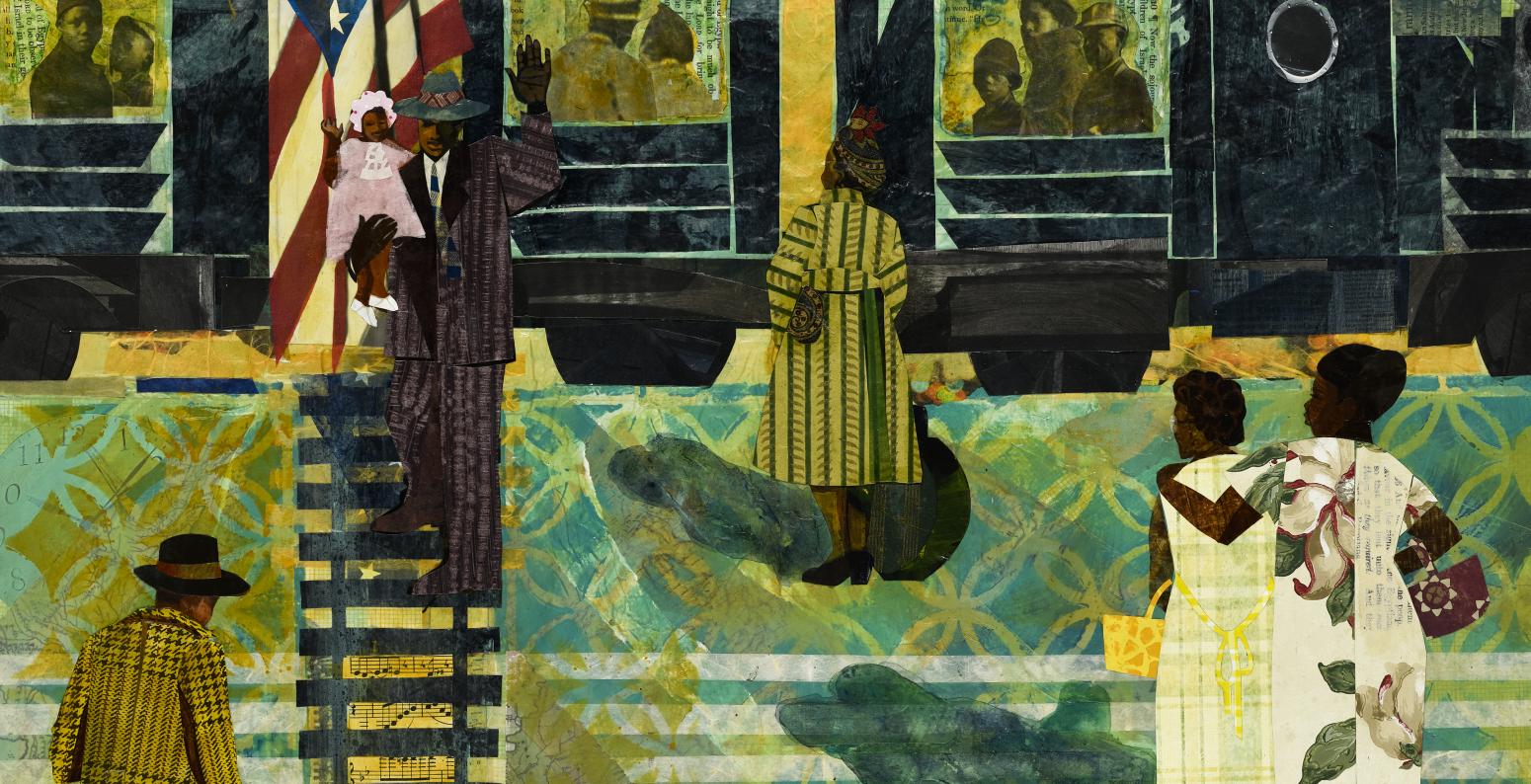
Ekua Holmes, Illustration for Voice of Freedom: Fannie Lou Hamer, Spirit of the Civil Rights Movement by Carole Boston Weatherford (Candlewick). Museum purchase. © 2015 Ekua Holmes.
Home & Away
José Aruego
Together the husband-and-wife team of Ariane Dewey (b. 1937) and José Aruego (1932-2012) created a world of memorable animal characters in over 60 picture books. Whose Mouse Are You? (1970) is an uplifting tale about a young mouse who reunites his mother, father, and sister after saving them from various predicaments. Typical of their working method, Aruego executed the drawing and Dewey painted the colors, though she did not originally receive credit on the publication.
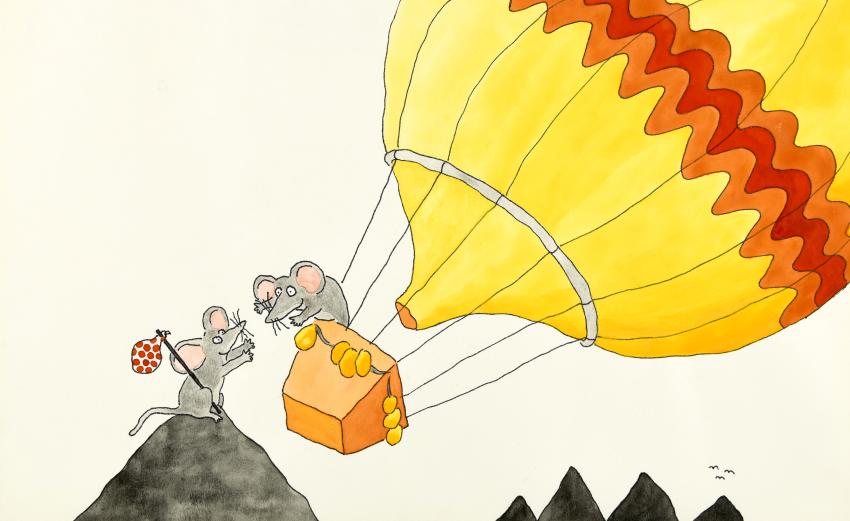
José Aruego and Ariane Dewey, Illustration for Whose Mouse Are You? by Robert Kraus. Gift of Ariane Dewey and Juan Aruego. © 1970 José Aruego.
Raúl Colón
Gabriella looks apprehensive as she struggles to communicate during her first day of school in the United States. She longs for the Cuba she left behind. Raúl Colón (b. 1950) collaborated with his wife, Edie, to tell her immigration story in Good-bye, Havana! Hola, New York! Colón renders the main character—whom the couple based on Edie as a child—in his signature style of vibrant color pencil on paper. Through her own curiosity and the kindness of others, Gabriella learns that an unfamiliar environment can become a new home.
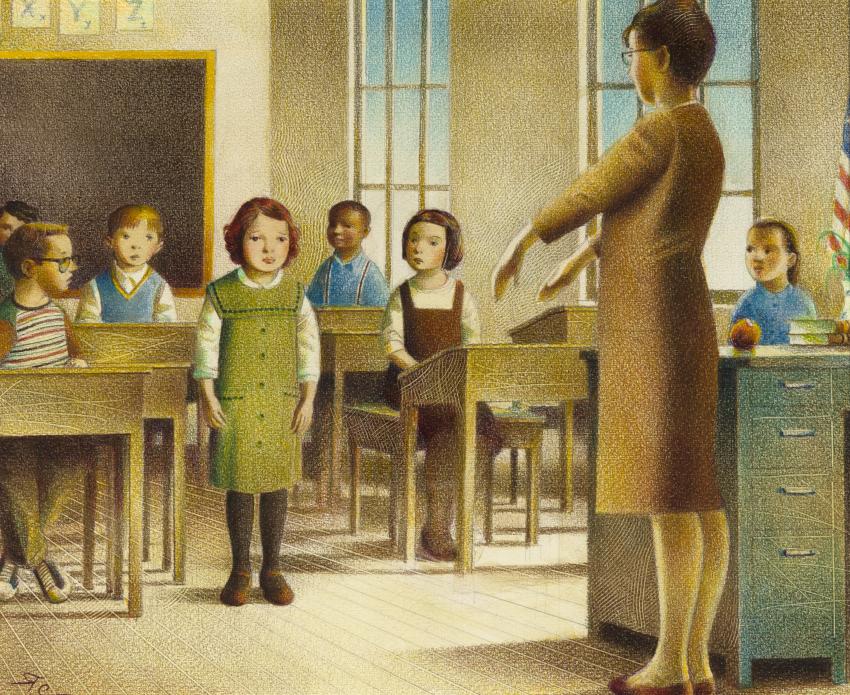
Raúl Colón, Good-bye, Havana! Hola, New York! by Edie Colón (Simon & Schuster). Gift of H. Nichols B. Clark in memory of Patrick Curley. © 2021 Raúl Colón.
Lulu Delacre
In her bilingual alphabet book, Lulu Delacre highlights the plants, animals, and birds that inhabit the unique ecosystem of the Andes cloud forest in Ecuador. Rich in visual information, Delacre’s acrylic painting captures both a vast view of the tropical landscape and the small creatures that inhabit it, including a Pinocchio lizard and Grass-green tanagers.
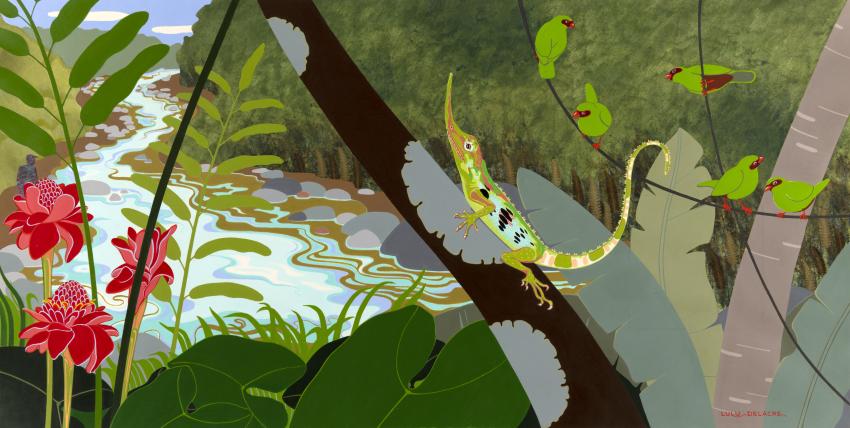
Ekua Holmes
Ekua Holmes (b. 1955) illustrates the remarkable true story of Fannie Lou Hammer, the youngest of 20 children born to Mississippi sharecroppers, who rose to prominence as a Civil Rights leader. Holmes incorporates a musical score into her collage to honor Hammer’s custom of singing Black spirituals to uplift fellow activists, while the train signifies escape from the Jim Crow south. Voice of Freedom was Holmes’s first picture book, for which she won a 2016 Caldecott Honor and the John Steptoe New Talent Illustrator Award.

Ekua Holmes, Illustration for Voice of Freedom: Fannie Lou Hamer, Spirit of the Civil Rights Movement by Carole Boston Weatherford (Candlewick). Museum purchase. © 2015 Ekua Holmes.
Lois Lenski
The children in Lois Lenski’s The San Francisco Boy learn about their Chinese heritage as they dart between their neighbors’ apartments in the bustling waterfront city. Lenski dedicated this drawing “For Alice Yu and her sons.” Alice Fong Yu was the first Chinese American public schoolteacher and a community organizer in San Francisco.
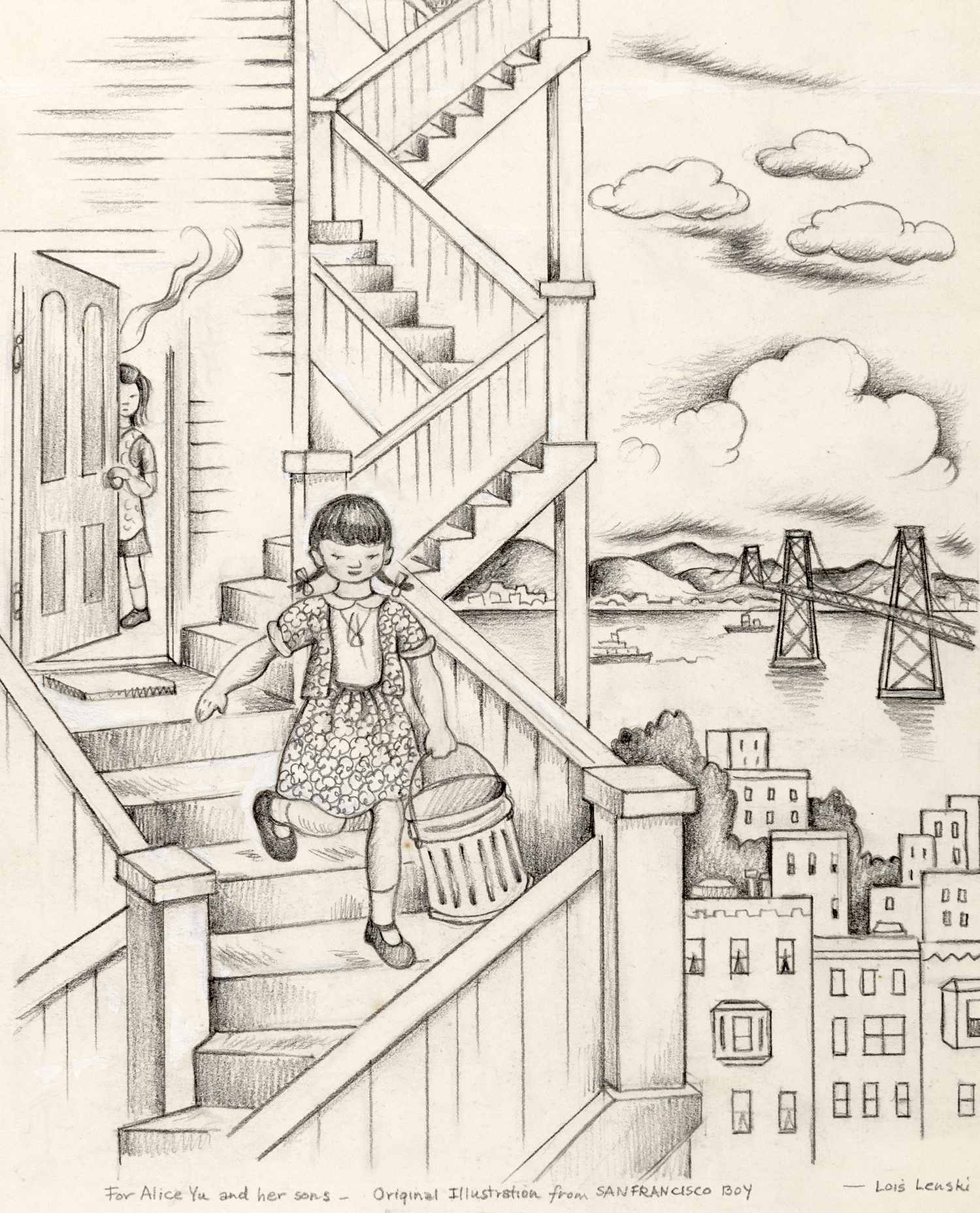
Lois Lenski, Illustration for The San Francisco Boy, Lippincott, 1955. Gift of Malcolm Whyte.
David Macaulay
David Macaulay (b. 1946) is celebrated for his architectural drawings and precision diagrams in books such as Cathedral: The Story of Its Construction (1973), Castle (1977), and The Way Things Work (1988). Macaulay breaks with his hyper-realistic style in his Caldecott Medal book Black and White (1990). This front-and-back cover illustration set the stage for the groundbreaking publication, which rejects a traditional linear narrative in favor of four stories that intersect to create an extraordinary pictorial journey. The Carle celebrated the 25th anniversary of the book in 2015 with the exhibition Gray Matter: David Macaulay’s Black and White.
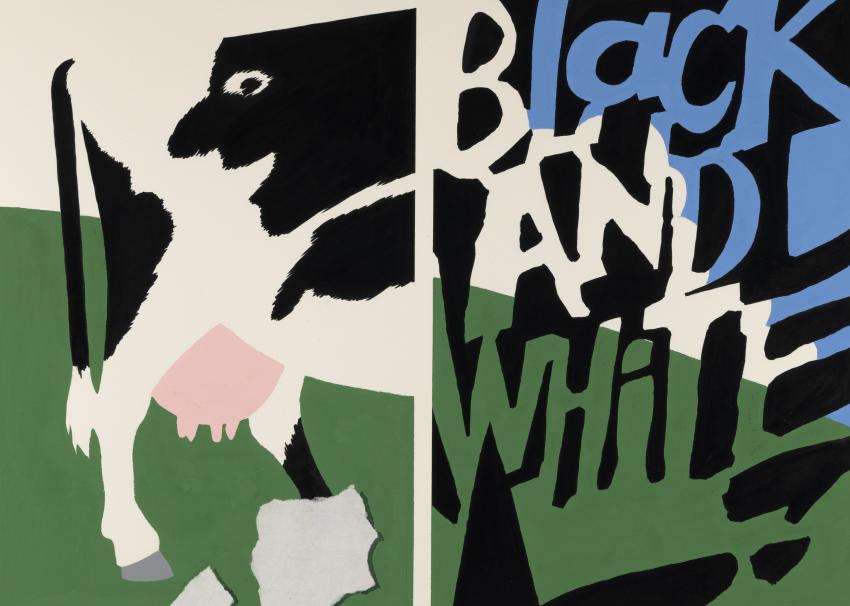
David Macaulay, Illustration for Black and White (Clarion). Gift to The Carle’s Permanent Collection from friends of Curator Emeritus H. Nichols B. Clark, in honor of his retirement. © 1990 David Macaulay.
Wendell Minor
Wendell Minor’s (b. 1944) eye-catching cover for Buzz Aldrin’s picture-book autobiography Reaching for the Moon (2008) is bold and precisely rendered. The composition is stunningly stark—its deep blackness suggestive of the infinite silence and span of space. Both artist and author signed the work.
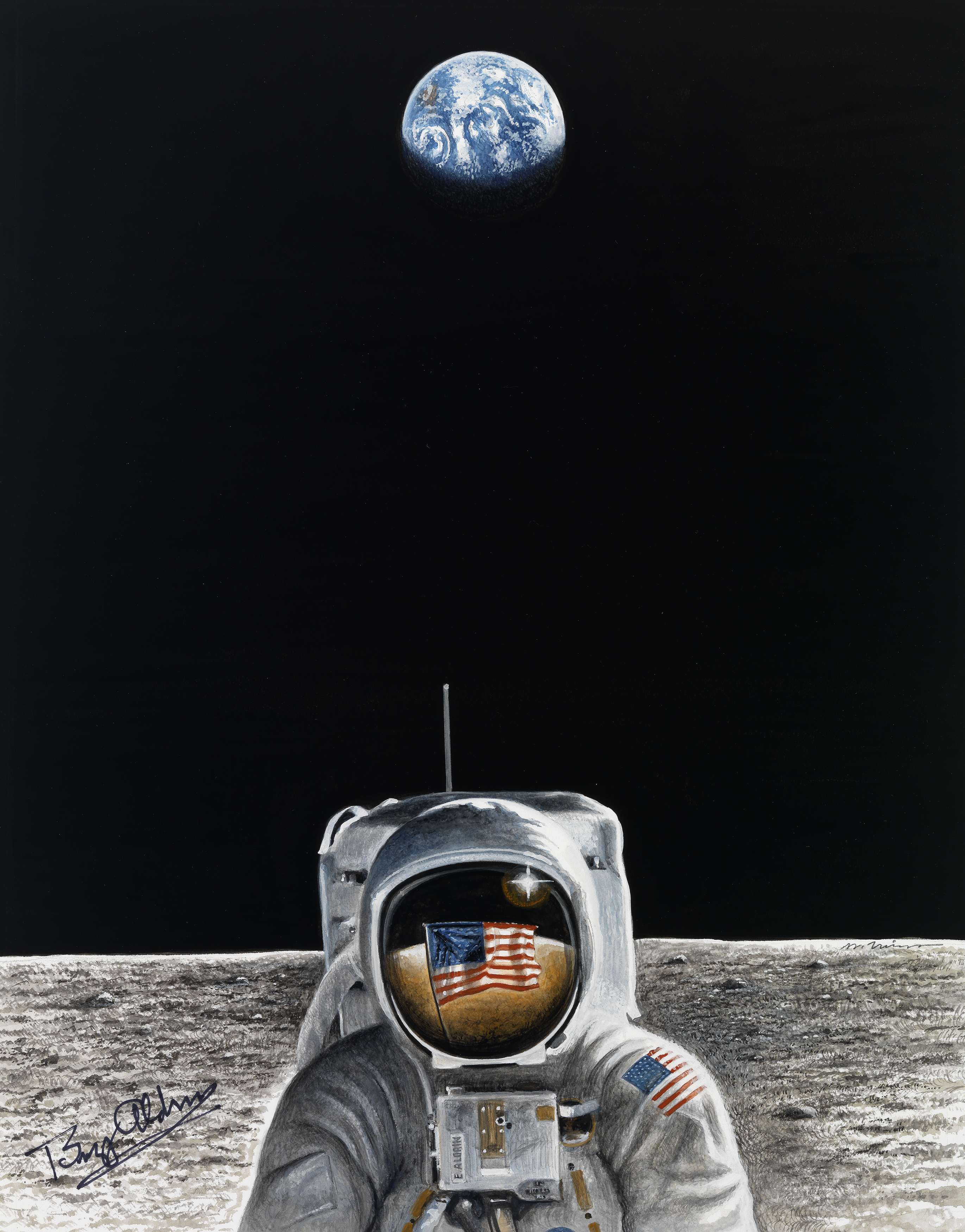
Wendell Minor, Illustration for Reaching for the Moon by Buzz Aldrin (HarperCollins). Gift of the Charles Collection. © 2005 Wendell Minor.
Barry Moser
It’s hard to ignore Barry Moser’s imposing portrait from his edition of The Wonderful Wizard of Oz. His flying monkey wears aviation gear, ready to pilot motorized wings inspired by early 20th century mechanical devices. Moser’s print, significantly larger than his published wood engraving, has rich, leathery walnut colors and a cloudless cyan sky.
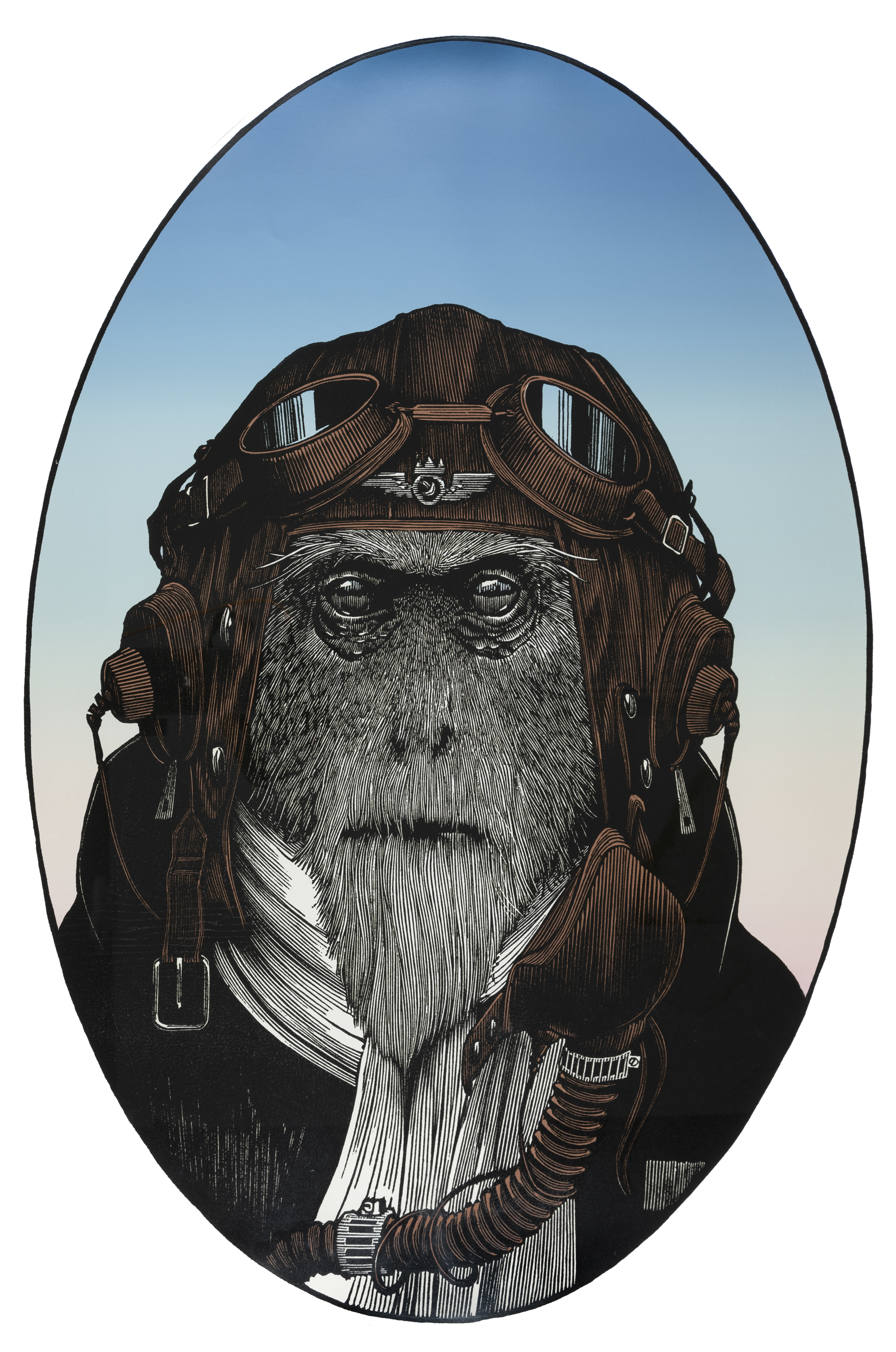
Matt Tavares
Matt Tavares (b. 1975) illustrates the legendary baseball story of Andy Oyle, the shortest player in the league, who hit the shortest home run in history (with some help from a muddy infield). This underdog story takes place in Minneapolis in 1903. Tavares captures the pivotal moment that all ball players both dread and long for—with bases loaded, Oyle’s team trailing and down to their final out—a chance to become a hero.
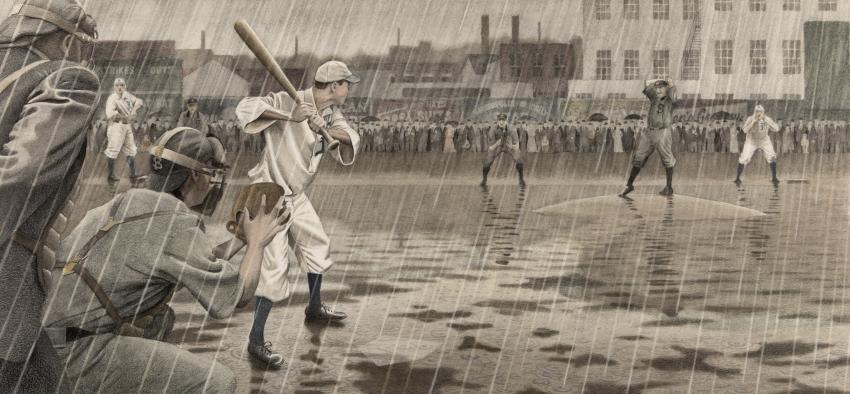
Matt Tavares, Illustration for Mudball (Candlewick). Gift of the Charles Collection. © 2005 Matt Tavares.
Chris Van Allsburg
Chris Van Allsburg’s (b. 1949) training as a sculptor is evident in the three-dimensional illusions he creates with oil on paper. In this dramatic moment from his Caldecott Medal book The Polar Express (1984), Santa’s elves struggle to move a believably heavy bag bulging with presents. The titular train carrying children to the fantastical North Pole emerges from the city’s shadows like a misty apparition. The Carle presented the exhibition The Mysteries of Chris Van Allsburg in 2004.
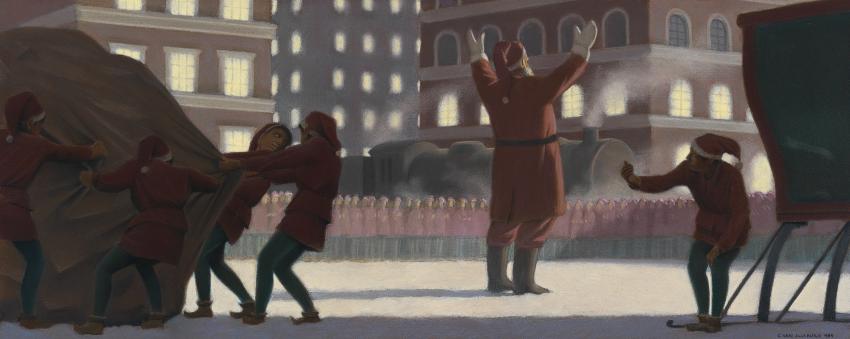
Chris Van Allsburg, Illustration for The Polar Express (Clarion). Gift of the Charles Collection. © 1985 Chris Van Allsburg.
